#Galaxy Black
Explore tagged Tumblr posts
Text



Tavares Strachan (Bahamian, b. 1979)
The First Supper (Galaxy Black), 2023. bronze, black patina and gold leaf
#tavares strachan#the first supper#galaxy black#black art#black artist#scupture#sculptor#sculptures#royal academy of arts#black history month#black history#shirley chisholm#harriet tubman#marsha p johnson
90 notes
·
View notes
Text
¡Xbox Series X se viste de blanco y lanza edición especial de 2 TB!
Microsoft renueva su línea de consolas Xbox. El gigante tecnológico Microsoft ha anunciado el lanzamiento de tres nuevas consolas Xbox para el mes de octubre: Xbox Series X blanca: Esta versión de la potente Xbox Series X llega con un elegante revestimiento blanco, a un precio de 449,99 dólares. Xbox Series X “Galaxy Black” de 2 TB: Una edición especial de la Xbox Series X con un acabado negro…
#2 TB#blanco#Consola#edición especial#Galaxy Black#lanzamiento#Microsoft#octubre#Series S#Series X#videojuegos#Xbox
0 notes
Text

Holding infinity
5K notes
·
View notes
Text
I DON'T GIVE A SHIT IF IT'S JUST THEIR FINALFEST OUTFITS, THEY LOOK SO COOL!!!




#splatoon#splatoon 3#splatfest#splatoween#pearl splatoon#marina splatoon#off the hook#pearl especially looks amazing#no I'm not biased#she just looks amazing in black especially with the glowing tentacles#I do love Marina with the galaxy ink
1K notes
·
View notes
Text

624 notes
·
View notes
Text
Black Hole Friday Deals!
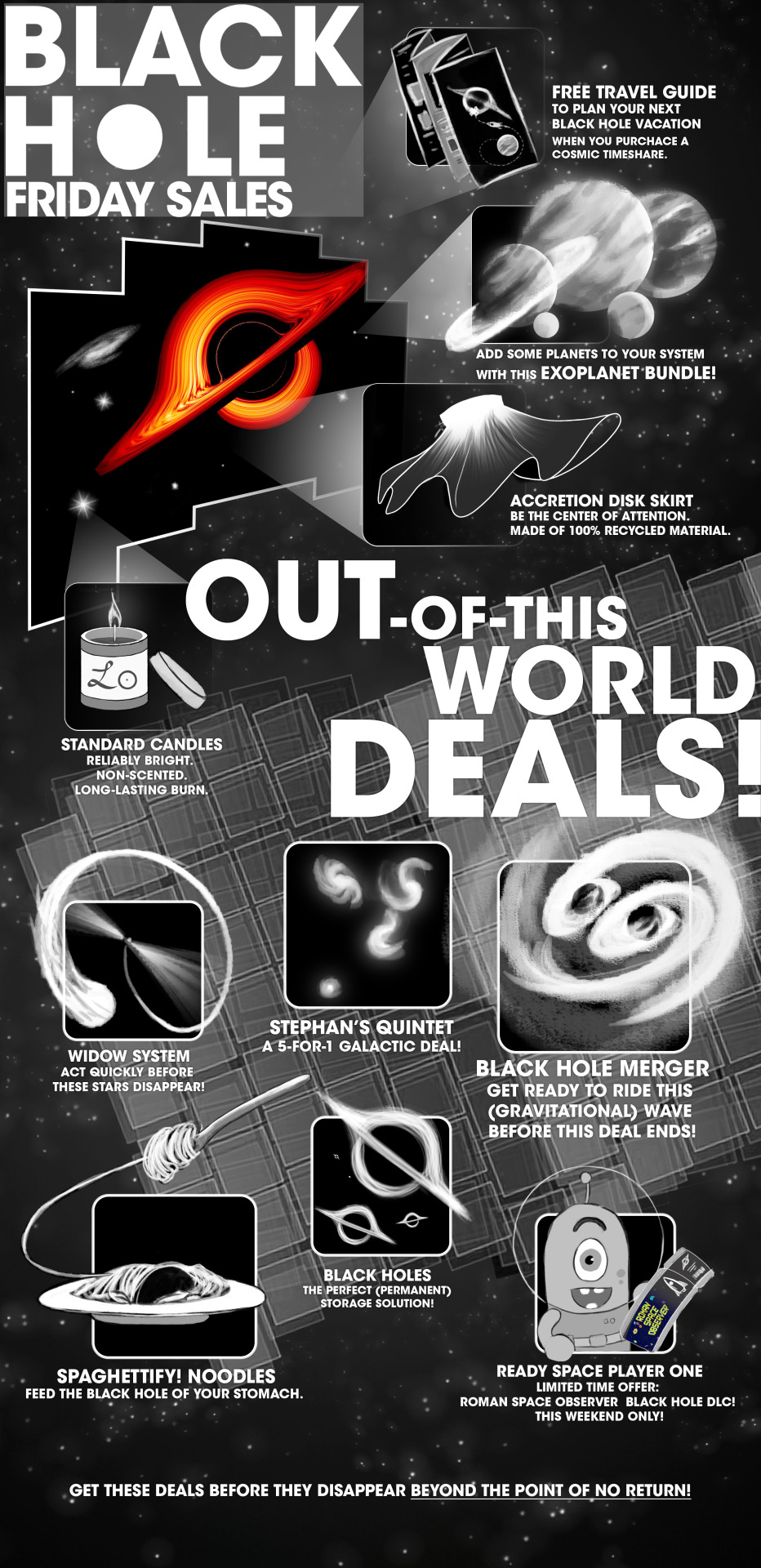
Get these deals before they are sucked into a black hole and gone forever! This “Black Hole Friday,” we have some cosmic savings that are sure to be out of this world.
Your classic black holes — the ultimate storage solution.
Galactic 5-for-1 special! Learn more about Stephan’s Quintet.
Limited-time offer game DLC! Try your hand at the Roman Space Observer Video Game, Black Hole edition, available this weekend only.
Standard candles: Exploding stars that are reliably bright. Multi-functional — can be used to measure distances in space!
Feed the black hole in your stomach. Spaghettification’s on the menu.
Act quickly before the stars in this widow system are gone!
Add some planets to your solar system! Grab our Exoplanet Bundle.
Get ready to ride this (gravitational) wave before this Black Hole Merger ends!
Be the center of attention in this stylish accretion disk skirt. Made of 100% recycled cosmic material.
Should you ever travel to a black hole? No. But if you do, here’s a free guide to make your trip as safe* as possible. *Note: black holes are never safe.
Make sure to follow us on Tumblr for your regular dose of space!
#NASA#astronomy#telescope#Roman Space Telescope#black holes#galaxies#cosmology#astrophysics#stars#galaxy#Hubble#Webb#space#exoplanets#science#physics#comic#comics#comic art
3K notes
·
View notes
Text
#marvel rivals#marvel games#rocket raccoon#groot#guardians of the galaxy#jeff the land shark#hero shooter#video games#marvel comics#meme#funny#black sabbath#paranoid#peter quill#gotg#star lord#mantis#adam warlock#marvel
666 notes
·
View notes
Text

We’re gonna have to be quiet if you wanna do this.
#zosan#zoro x sanji#roronoa zoro#one piece netflix#opla#one piece#sanji#zoro#galaxy draws#just when you think I’m done I come back and whack you on the back of the head guignol style#black leg sanji
7K notes
·
View notes
Text
5K notes
·
View notes
Text

Paperhatober Day 18: Space🪐
#no plot or backstory for this!#how can they breathe? idk! but they can!#just smth pretty for your eyes#often art has no deeper meaning to me than to scratch my brain good when I look at it#villainous#vilanesco#villanos#dr flug#flug#kenning flugslys#villainous dr flug#villainous flug#black hat#paperhat#paperhatober#space#outer space#galaxy#cartoon#fanart#my art#I can't lie comfortably on my tummy anymore so I'm slow with art now#this background was zero fun and way too much work for way too long for the little attention people are gonna pay to it
363 notes
·
View notes
Text
once again thinking about @void-dude's static ford. ough.
check this out
#gravity falls#billford#bill cipher#stanford pines#the book of bill#flashing lights cw#scopophobia cw#just. the idea that bill has all these galaxies and worlds at his command. that he parties constantly and should be happy#but isnt#hes not happy. hes fucking miserable. but he has so much power.#and so many grand things. cosmos. stars. galaxies. so much.#but ford. who settled down with his family. is happy?#and that bill could have had that happiness but let his delusions of grandeur blind him? that bill finally found someone that understood hi#someone that when asked to look at the stars didnt blind him but instead admired him?#and he FUMBLED IT SO HARD?#in pursuit of a goal that ultimately would never make him happy but he thought it would and he destroyed any CHANCE of having that happines#(ford) back ever again?#augh#and him having to come to terms with the fact that he fumbled it so bad and that ford actually meant something to him?#oh man.#anyway.#sorry to @ u void dude but ur static ford is legit so goooood#okay anyway#animatic#tbob#op art#song is image of black me from evangelion#ill add id later. once i make sure this thing actually uploads#eye strain cw
434 notes
·
View notes
Text


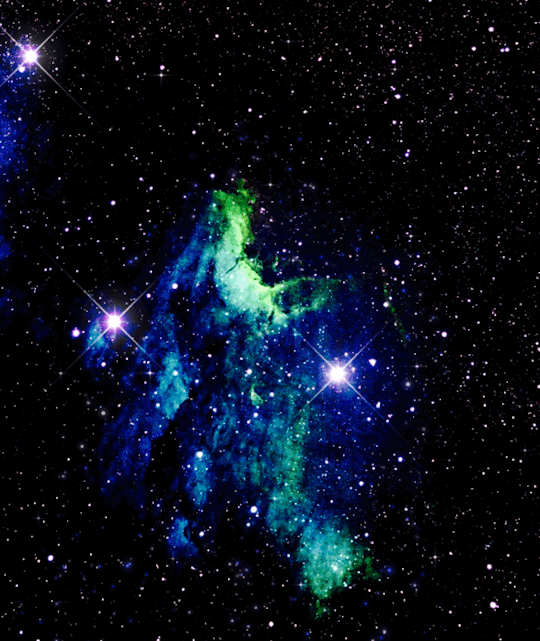
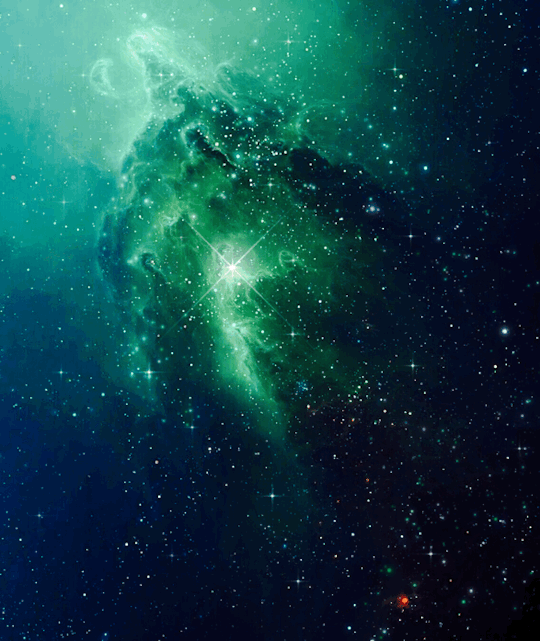
◾️▪️🖤Punk Space🖤▪️◾️
#gifs(edits) made by me :)#assassin1513#mystical#stars#lost in space#space#space vibes#space aesthetic#outer space#to infinity and beyond#infinity#punk#neon#beyond#nebula#star cluster#void#cosmos#dark#darkness#green#purple#black#blue#spacecore#space moodboard#space exploration#space ambient#universe#galaxy
706 notes
·
View notes
Text
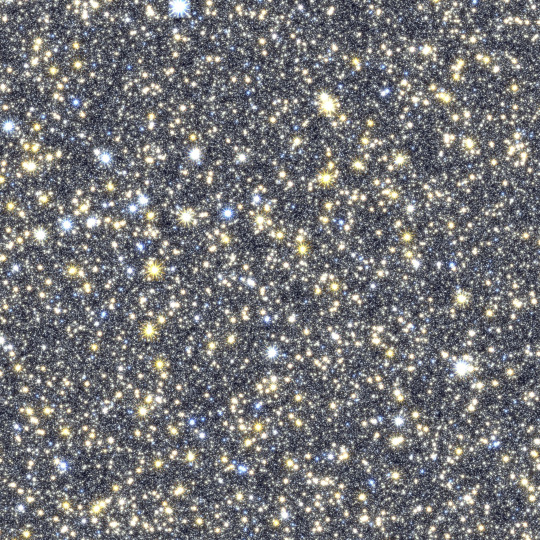
A simulated image of NASA’s Nancy Grace Roman Space Telescope’s future observations toward the center of our galaxy, spanning less than 1 percent of the total area of Roman’s Galactic Bulge Time-Domain Survey. The simulated stars were drawn from the Besançon Galactic Model.
Exploring the Changing Universe with the Roman Space Telescope
The view from your backyard might paint the universe as an unchanging realm, where only twinkling stars and nearby objects, like satellites and meteors, stray from the apparent constancy. But stargazing through NASA’s upcoming Nancy Grace Roman Space Telescope will offer a front row seat to a dazzling display of cosmic fireworks sparkling across the sky.
Roman will view extremely faint infrared light, which has longer wavelengths than our eyes can see. Two of the mission’s core observing programs will monitor specific patches of the sky. Stitching the results together like stop-motion animation will create movies that reveal changing objects and fleeting events that would otherwise be hidden from our view.
youtube
Watch this video to learn about time-domain astronomy and how time will be a key element in NASA’s Nancy Grace Roman Space Telescope’s galactic bulge survey. Credit: NASA’s Goddard Space Flight Center
This type of science, called time-domain astronomy, is difficult for telescopes that have smaller views of space. Roman’s large field of view will help us see huge swaths of the universe. Instead of always looking at specific things and events astronomers have already identified, Roman will be able to repeatedly observe large areas of the sky to catch phenomena scientists can't predict. Then astronomers can find things no one knew were there!
One of Roman’s main surveys, the Galactic Bulge Time-Domain Survey, will monitor hundreds of millions of stars toward the center of our Milky Way galaxy. Astronomers will see many of the stars appear to flash or flicker over time.
youtube
This animation illustrates the concept of gravitational microlensing. When one star in the sky appears to pass nearly in front of another, the light rays of the background source star are bent due to the warped space-time around the foreground star. The closer star is then a virtual magnifying glass, amplifying the brightness of the background source star, so we refer to the foreground star as the lens star. If the lens star harbors a planetary system, then those planets can also act as lenses, each one producing a short change in the brightness of the source. Thus, we discover the presence of each exoplanet, and measure its mass and how far it is from its star. Credit: NASA's Goddard Space Flight Center Conceptual Image Lab
That can happen when something like a star or planet moves in front of a background star from our point of view. Because anything with mass warps the fabric of space-time, light from the distant star bends around the nearer object as it passes by. That makes the nearer object act as a natural magnifying glass, creating a temporary spike in the brightness of the background star’s light. That signal lets astronomers know there’s an intervening object, even if they can’t see it directly.
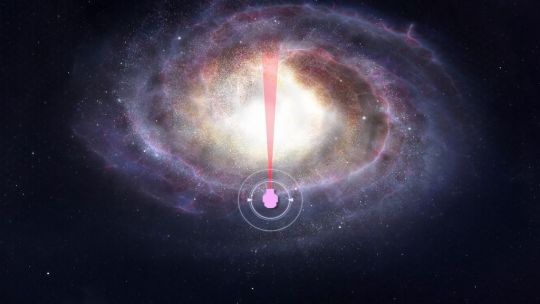
This artist’s concept shows the region of the Milky Way NASA’s Nancy Grace Roman Space Telescope’s Galactic Bulge Time-Domain Survey will cover – relatively uncharted territory when it comes to planet-finding. That’s important because the way planets form and evolve may be different depending on where in the galaxy they’re located. Our solar system is situated near the outskirts of the Milky Way, about halfway out on one of the galaxy’s spiral arms. A recent Kepler Space Telescope study showed that stars on the fringes of the Milky Way possess fewer of the most common planet types that have been detected so far. Roman will search in the opposite direction, toward the center of the galaxy, and could find differences in that galactic neighborhood, too.
Using this method, called microlensing, Roman will likely set a new record for the farthest-known exoplanet. That would offer a glimpse of a different galactic neighborhood that could be home to worlds quite unlike the more than 5,500 that are currently known. Roman’s microlensing observations will also find starless planets, black holes, neutron stars, and more!
youtube
This animation shows a planet crossing in front of, or transiting, its host star and the corresponding light curve astronomers would see. Using this technique, scientists anticipate NASA’s Nancy Grace Roman Space Telescope could find 100,000 new worlds. Credit: NASA’s Goddard Space Flight Center/Chris Smith (USRA/GESTAR)
Stars Roman sees may also appear to flicker when a planet crosses in front of, or transits, its host star as it orbits. Roman could find 100,000 planets this way! Small icy objects that haunt the outskirts of our own solar system, known as Kuiper belt objects, may occasionally pass in front of faraway stars Roman sees, too. Astronomers will be able to see how much water the Kuiper belt objects have because the ice absorbs specific wavelengths of infrared light, providing a “fingerprint” of its presence. This will give us a window into our solar system’s early days.
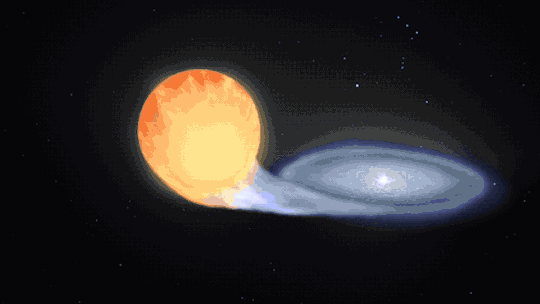
This animation visualizes a type Ia supernova.
Roman’s High Latitude Time-Domain Survey will look beyond our galaxy to hunt for type Ia supernovas. These exploding stars originate from some binary star systems that contain at least one white dwarf – the small, hot core remnant of a Sun-like star. In some cases, the dwarf may siphon material from its companion. This triggers a runaway reaction that ultimately detonates the thief once it reaches a specific point where it has gained so much mass that it becomes unstable.
youtube
NASA’s upcoming Nancy Grace Roman Space Telescope will see thousands of exploding stars called supernovae across vast stretches of time and space. Using these observations, astronomers aim to shine a light on several cosmic mysteries, providing a window onto the universe’s distant past. Credit: NASA’s Goddard Space Flight Center
Since these rare explosions each peak at a similar, known intrinsic brightness, astronomers can use them to determine how far away they are by simply measuring how bright they appear. Astronomers will use Roman to study the light of these supernovas to find out how quickly they appear to be moving away from us.
By comparing how fast they’re receding at different distances, scientists can trace cosmic expansion over time. This will help us understand whether and how dark energy – the unexplained pressure thought to speed up the universe’s expansion – has changed throughout the history of the universe.
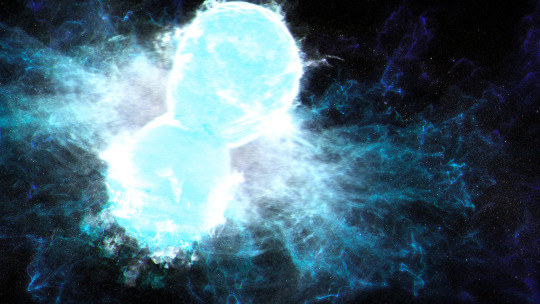
NASA’s Nancy Grace Roman Space Telescope will survey the same areas of the sky every few days. Researchers will mine this data to identify kilonovas – explosions that happen when two neutron stars or a neutron star and a black hole collide and merge. When these collisions happen, a fraction of the resulting debris is ejected as jets, which move near the speed of light. The remaining debris produces hot, glowing, neutron-rich clouds that forge heavy elements, like gold and platinum. Roman’s extensive data will help astronomers better identify how often these events occur, how much energy they give off, and how near or far they are.
And since this survey will repeatedly observe the same large vista of space, scientists will also see sporadic events like neutron stars colliding and stars being swept into black holes. Roman could even find new types of objects and events that astronomers have never seen before!
Learn more about the exciting science Roman will investigate on X and Facebook.
Make sure to follow us on Tumblr for your regular dose of space!
#NASA#astronomy#telescope#Roman Space Telescope#dark energy#galaxies#cosmology#astrophysics#stars#galaxy#space images#time#supernova#Nancy Grace Roman#black holes#neutron stars#kilonova#rogue planets#exoplanets#space#science#tech#technology#Youtube
3K notes
·
View notes
Text



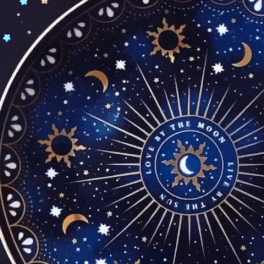

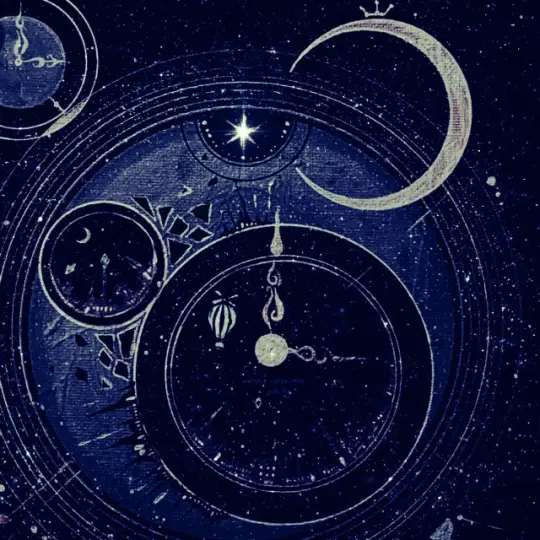

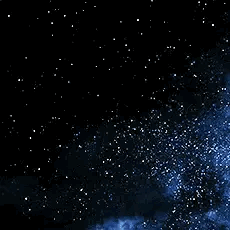

✦ | Mars Stimboard
✧ ✧ ✧ | ✧ ✧ ✧ | ✧ ✧ ✧
[ Laika's Comet by @fourleafisland ]
#stimboard#stim#blue#black#yellow#mars#laika's comet#stars#galaxy#painting#glitter#planets#jewelry#sensoryeen
1K notes
·
View notes
Text

A conversation between teen Sanji & Zoro, upon finally meeting after 1934996 years of gay pining over denden (👇 this is what Sanji’s referring to, btw)

6K notes
·
View notes
Text

Theta Tauri
#night#astronomy#sky#space#stars#nasa#science#universe#nebula#galaxy#cosmos#theta tauri#black and white photography
1K notes
·
View notes